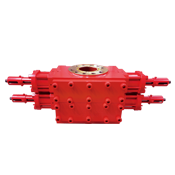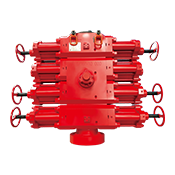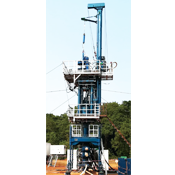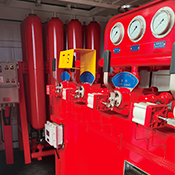Quality BOP Control Devices: Maximizing Performance and Reliability
2025-06-08
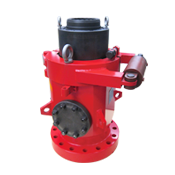
Quality BOP Control Devices: Maximizing Performance and Reliability
Table of Contents
1. Understanding BOP Control Devices
2. Key Features of High-Quality BOP Control Devices
3. Importance of Reliability in BOP Systems
3.1 The Role of Safety in BOP Operations
3.2 Consequences of BOP Failures
4. Maintenance Strategies for BOP Control Devices
4.1 Regular Inspections and Testing
4.2 Troubleshooting Common Issues
5. Technological Advancements in BOP Control Systems
5.1 Automation in BOP Operations
5.2 Integration with Centralized Control Systems
6. Choosing the Right BOP Control Device for Your Needs
7. Case Studies: Successful Implementation of BOP Systems
8. Frequently Asked Questions (FAQs)
9. Conclusion
1. Understanding BOP Control Devices
Blowout Preventers (BOPs) are critical safety devices used in oil and gas drilling operations to prevent uncontrolled release of crude oil or natural gas from a well. A **Quality BOP control device** ensures that the pressure is maintained, thereby minimizing the risk of blowouts. Understanding how these devices function is vital for operators and engineers alike.
2. Key Features of High-Quality BOP Control Devices
High-quality BOP control devices incorporate several essential features that enhance their reliability and performance. Key features include:
- **Robust construction**: Made from durable materials that withstand extreme pressure and temperatures.
- **Efficient sealing mechanisms**: Designed to ensure tight seals under various conditions, preventing leaks.
- **User-friendly interfaces**: Intuitive controls for easy operation and monitoring.
- **Real-time data transmission**: For immediate feedback and adjustments.
These features contribute significantly to the overall effectiveness of BOP systems.
3. Importance of Reliability in BOP Systems
The reliability of BOP control devices cannot be overstated. In the high-stakes environment of oil and gas extraction, even minor failures can lead to catastrophic consequences.
3.1 The Role of Safety in BOP Operations
Safety is paramount in BOP operations. A reliable BOP control device minimizes risks to personnel and the environment, serving as the first line of defense against blowouts. Ensuring that these devices function correctly can save lives and protect assets.
3.2 Consequences of BOP Failures
Failures in BOP control devices can lead to severe outcomes, including:
- **Environmental disasters**: Oil spills can have devastating effects on marine life and ecosystems.
- **Financial losses**: The costs associated with blowout incidents can reach millions, including fines and remediation efforts.
- **Reputation damage**: Operator companies face significant reputational harm following a blowout, which can affect future business opportunities.
4. Maintenance Strategies for BOP Control Devices
To ensure the longevity and reliability of BOP control devices, implementing a rigorous maintenance strategy is essential.
4.1 Regular Inspections and Testing
Conducting regular inspections and testing of BOP systems helps identify potential issues before they escalate. Operators should adhere to a stringent schedule for maintenance checks, including:
- Routine visual inspections.
- Functional testing of control systems.
- Pressure tests to validate seal integrity.
4.2 Troubleshooting Common Issues
Being equipped to troubleshoot common issues can prevent costly downtime. Common problems to watch for include:
- Hydraulic leaks: Regularly inspect hydraulic lines and fittings.
- Control system malfunctions: Ensure the electronic components are functioning correctly and replace faulty parts immediately.
5. Technological Advancements in BOP Control Systems
Recent advancements in technology have significantly enhanced the effectiveness of BOP control devices.
5.1 Automation in BOP Operations
Automation has revolutionized the way BOPs are operated. Automated systems reduce human error and improve response times during critical events. These systems can automatically adjust settings based on real-time data, ensuring optimal performance.
5.2 Integration with Centralized Control Systems
Integrating BOP control devices with centralized control systems allows for better monitoring and management of drilling operations. This connectivity facilitates data collection, analysis, and quick decision-making, ultimately improving safety and efficiency.
6. Choosing the Right BOP Control Device for Your Needs
Selecting the appropriate BOP control device requires careful consideration of various factors, including:
- **Type of drilling operation**: Different operations may require specific BOP designs and functionalities.
- **Pressure requirements**: Ensure that the BOP can handle the pressures anticipated during operations.
- **Regulatory compliance**: Verify that the device meets industry standards and regulations.
Making an informed choice can lead to enhanced performance and reliability in BOP operations.
7. Case Studies: Successful Implementation of BOP Systems
Several companies have successfully implemented advanced BOP control devices, leading to improved safety and efficiency. For instance:
- **Case Study 1**: A major oil company integrated automated BOP systems in their offshore drilling operations, resulting in a 30% reduction in response time during emergencies.
- **Case Study 2**: A mid-sized company adopted centralized control for their BOP devices, which improved data collection and enhanced operational efficiency by 25%.
These case studies illustrate the tangible benefits that can be achieved through careful selection and maintenance of BOP control devices.
8. Frequently Asked Questions (FAQs)
**Q1: What is a BOP control device?**
A BOP control device is a safety mechanism used in drilling operations to prevent blowouts by sealing wells under high pressure.
**Q2: How often should BOP control devices be inspected?**
BOP control devices should be inspected and tested regularly, typically at least once every six months or before major drilling activities.
**Q3: What are the signs of a failing BOP control device?**
Common signs include abnormal pressure readings, hydraulic leaks, and control system malfunctions.
**Q4: How does automation improve BOP operations?**
Automation reduces human error, enhances response times, and allows for real-time adjustments to operational settings.
**Q5: Can BOP control devices be retrofitted with new technology?**
Yes, many modern BOP control systems can be retrofitted or upgraded to incorporate the latest technological advancements.
9. Conclusion
Investing in **Quality BOP control devices** is essential for maximizing performance and ensuring reliability in drilling operations. By understanding the key features, maintenance strategies, and technological advancements, operators can significantly reduce risks associated with blowouts. Choosing the right equipment and implementing robust maintenance practices will lead to safer operations and better overall outcomes. Prioritizing quality and reliability in BOP control devices not only protects lives and assets but also enhances the efficiency and success of drilling activities.
Related News
Contact Us
Mailbox:
tiehu@tiehupetro.com
Telephone:
86-317-2616808
Address:
Yanling Industrial Zone, Renqiu City, Cangzhou City, Hebei Province, China


